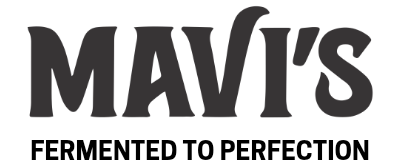🧃 How to Spot a Fake Kombucha: 5 Warning Signs to Look For
Kombucha has quickly become one of the most popular fermented health drinks — and for good reason.
This fizzy, fermented tea is packed with probiotics, antioxidants, and natural acids that support gut health and digestion.
But with popularity comes imitation. Not every bottle labeled “kombucha” is real.
What if you’ve been drinking an overpriced iced tea marketed as kombucha?
Surprised? Don’t worry — this guide will help you spot fake kombucha so you never compromise on quality or health benefits.
1. “Zero Sugar” on the Label? Be Cautious.
Always check the nutritional label and ingredient list.
🔍 If a kombucha claims to have 0% sugar yet tastes sweet — something’s off.
Authentic kombucha needs some natural sugar for fermentation.
If the label says zero sugar, it should taste sour and vinegary, not sweet.
💡 Tip: If the brand claims it’s sweet with zero sugar, it may be using artificial sweeteners or misleading marketing. When in doubt, reach out to the brewer.
SEO Keywords: kombucha with no sugar, fake kombucha signs, kombucha sugar content
2. Long Shelf Life or No Refrigeration? It’s Not Real.
Real kombucha is alive and contains active cultures. That means it needs refrigeration to slow down fermentation — just like homemade yogurt.
❌ Shelf-stable kombucha that doesn’t require cooling is likely pasteurised or heavily processed.
⚠️ Unrefrigerated kombucha continues to ferment, which makes it more sour and potentially causes the bottle to expand or leak.
🧃 If your kombucha sits on shelves for months with no refrigeration, it likely contains no live probiotics — it’s just a fancy soft drink.
SEO Keywords: shelf-stable kombucha, does kombucha need refrigeration, how to store kombucha
3. Pasteurised Kombucha = Dead Kombucha
Pasteurisation is a heat-treatment process used to increase shelf life by killing bacteria — but in kombucha, it also kills the good bacteria (probiotics).
❌ Pasteurised kombucha may still taste fizzy, but it offers no gut health benefits.
✅ Choose raw, unpasteurised kombucha that contains live cultures for true probiotic effects.
SEO Keywords: is pasteurised kombucha real, raw vs pasteurised kombucha, kombucha probiotics
4. Crystal Clear? It’s Probably Filtered — and Fake.
Authentic kombucha will always have some sediment or cloudiness. That’s a good sign — it means the drink still has active yeast, bacteria, and fruit particles from natural fermentation.
❌ A kombucha that looks 100% clear is likely heavily filtered, removing all the beneficial living components.
✅ Look for strands, sediments, or floating bits — these are natural and healthy.
SEO Keywords: clear kombucha fake, kombucha sediment, what should kombucha look like
5. “Probiotic” Without Proof? Don’t Be Fooled.
Many brands claim their kombucha is “probiotic,” but don’t show lab results or CFU counts.
Authentic probiotic drinks should contain billions of CFUs (Colony Forming Units) per bottle.
❌ Anything less is not truly probiotic unless fortified artificially.
✅ The best kombucha is naturally fermented and alive — not chemically enhanced.
SEO Keywords: probiotic kombucha CFU, kombucha health claims, kombucha bacteria count
✅ Final Tip: Ask Your Brewer
The best way to verify if your kombucha is real?
Ask the brewer. Any transparent and trustworthy brand will gladly share how they make their kombucha.
💬 At MAVI’s Pantry
We don’t pasteurise, over-filter, or make probiotic claims unless we can prove them.
We believe in raw, authentic kombucha — crafted with integrity and full of life.




